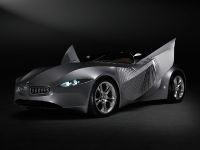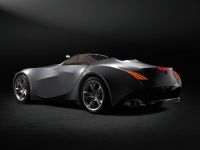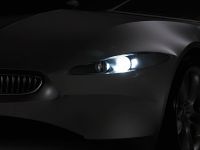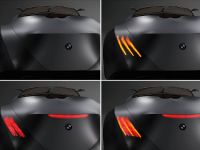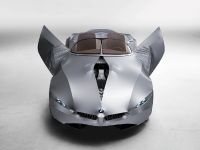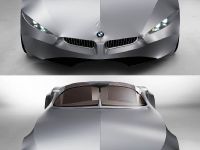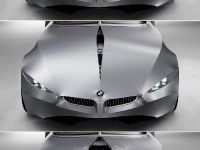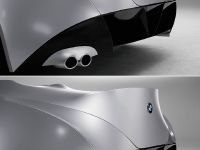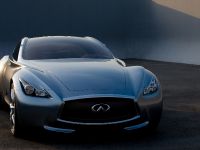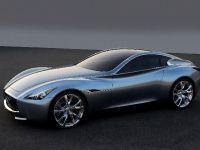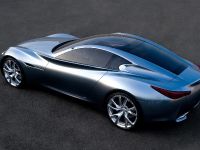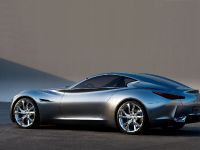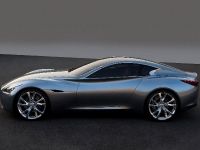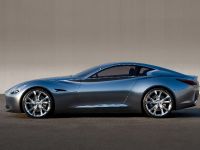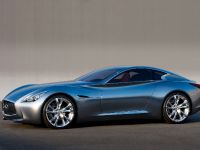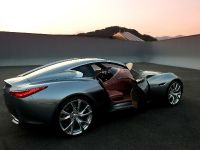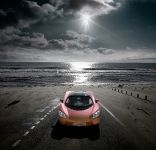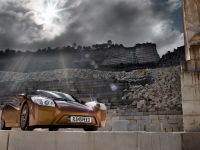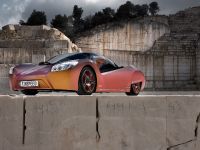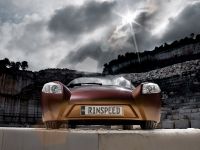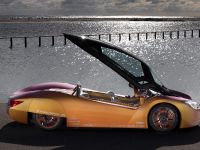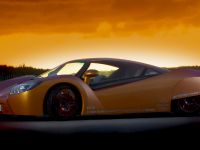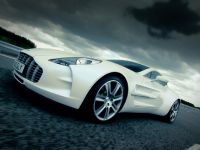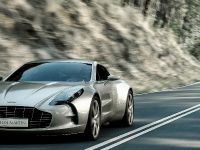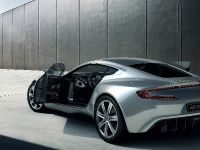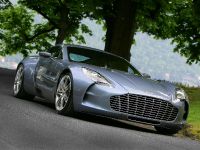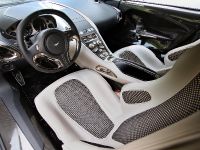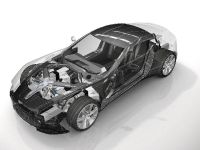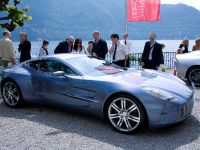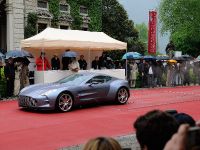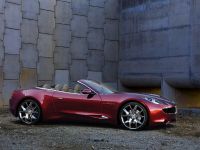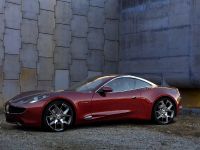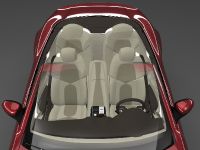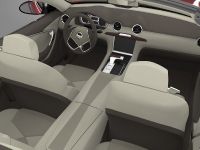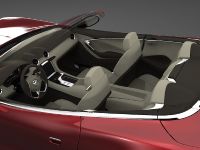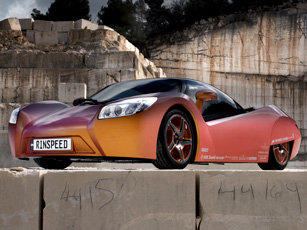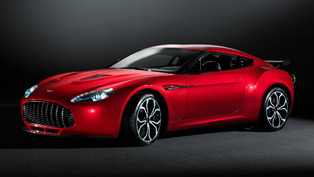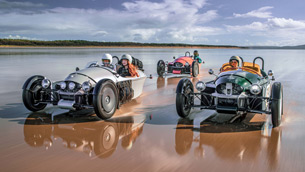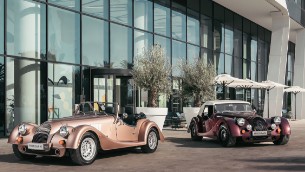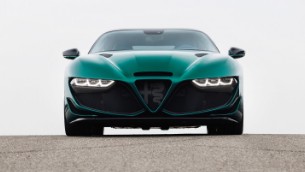Concept Cars at the Concorso d’Eleganza Villa d’Este
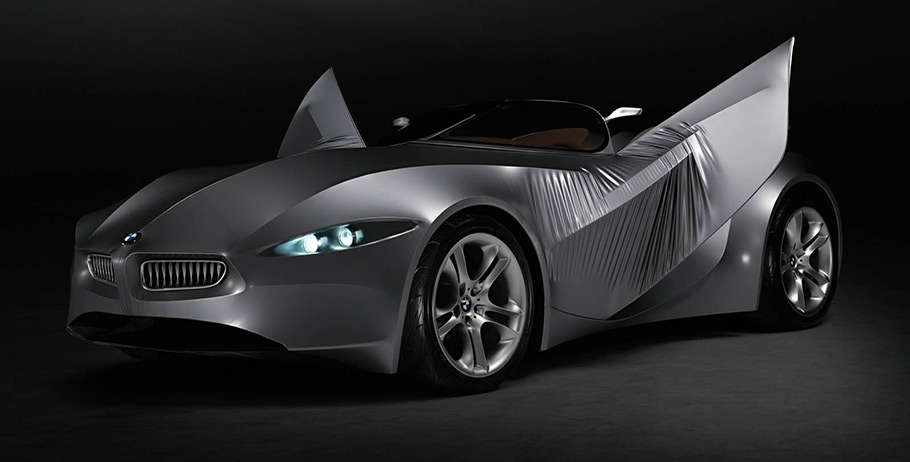
This year the Concorso d'Eleganza Villa d'Este once again invites contemporary concept cars and prototypes to compete alongside the historic models traditionally on display. To qualify for entry, concepts have to be driveable and no older than three years. As announced at the Concorso d'Eleganza Villa d'Este's second press conference in Milan, eight such vehicles will attend the event at the end of April in a bid to be crowned the most beautiful contemporary concept car. The winner will be chosen not by the jury but by the public. In this, the Concorso perpetuates a tradition going back 80 years: as long ago as 1929 the public was already ranking the showcased models according to their looks. For ten years now, this beauty contest of worldwide acclaim has been held under the patronage of the BMW Group. Three world premieres and a further five sensational concept cars form the worthy framework for this anniversary Concorso.
GINA Light as guest of honour BMW will be dispatching the sensational GINA Light study to Lake Como – hors concours – as a birthday guest. Ordinarily the GINA Light can only be viewed by visitors to the BMW Museum at the end of the special "BMW Concept Cars" exhibition. At the Concorso the design study will make its debut outdoor appearance and provide a first opportunity to view a number of concrete manifestations of the multifaceted GINA philosophy. With the GINA Light, the limits of contemporary materials and production processes are pushed far into the future. For all the innovations embodied in this vehicle, the focus is on the adaptability of forms and functions that are geared to the individual and situational needs of the driver as well as the relevant driving conditions.
That is the reason why both the exterior and the interior feature numerous components that are strikingly different from conventional solutions not just visually but also in terms of their basic conceptual attributes. For example, the GINA Light visionary model has a practically seamless outer skin made of an elastic textile material that is stretched over a moveable frame. Functions are only activated as and when required. Thanks to this utterly novel interpretation of familiar functionality and structure, the driver enjoys a very different experience behind the wheel of the car. The reduction to the essentials and adaptation to the needs of the driver enhance the emotional impact of the vehicle, fulfilling a key goal of the GINA philosophy.
World premieres: Stile Bertone, Morgan and Zagato In recent years, world premieres have regularly been a key component of the Concorso d'Eleganza. Now the 80th anniversary occasion is about to set a record: for the first time three concepts will be unveiled before the eyes of the world at Lake Como. Automobiles by Stile Bertone have always been very special, and that has naturally stoked the Concorso's happy anticipation of the world premiere from the Italian styling house. Powered by a V8 engine, the car's outer skin observes the laws of aerodynamics while the choice of carbon fibre sets benchmarks in lightweight construction. Morgan will also be presenting a two-seater at the Concorso. This study, built on the Morgan Aeromax platform, marks the centenary of the tradition-steeped British marque. Celebrating the 90th anniversary of a family tradition, meanwhile, is Andrea Zagato – likewise calling for a Concorso d'Eleganza Villa d'Este premiere hailing from his exclusive design studio. No less spectacular than these world premieres are the five exceptional design studies heading for Lake Como following their official unveiling before the public:
Infiniti Essence With its Essence model, presented as a concept at the 79th Geneva Motor Show, Infiniti celebrates its first 20 years as a manufacturer of premium automobiles while at the same time offering an exciting glimpse of what customers can expect from this luxury brand in the future.
A 600 hp coupé with a petrol/electric hybrid engine and rear-wheel drive, the Essence fuses superior design, technology and performance. An eloquent embodiment of the core attributes of the Infiniti marque, it spans an arc from the past to the automotive future.
Test bed and design study in one, the Essence points to the future of the Infiniti brand in terms of technology and style. Moreover, this concept for the first time showcases Infiniti's guiding principle of "Inspired Performance" as applied to the exclusive segment of luxury super-coupés.
mindset Not a city car, not an SUV, not a sports car. mindset is as unique as it is self-explanatory: a lightweight, powerful and efficient commuter for everyday use. Its "high heels" – meaning its large, slim wheels – raise the aerodynamic coupé body to the same level as other traffic. One, two or more passengers, bags and baggage, animals or kids in tow – entry and exit are easy, the interior provides a good view of the road, and progress is pacy and pleasant. A composed appearance exuding power but without aggression: for mindset that is the visual manifestation of a contemporary hybrid vehicle.
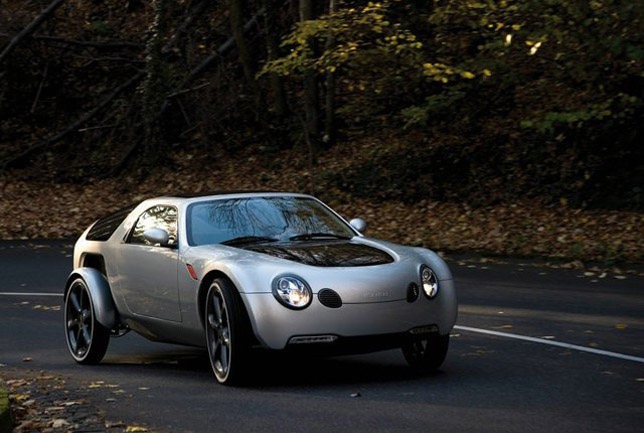
The specifications state that, as a two-seater high-powered electric car, the mindset can accelerate to 100 km/h in 7 seconds, its lithium-ion battery giving it a range of 180 kilometres. Top speed is governed at 140 km/h. A supplementary petrol engine is to be offered as a range extender. This generates electric power and boosts the range to 800 kilometres. Moreover, a second battery can be used or additional power generated by solar panels. Running purely on electric power, the mindset is emission-free. When using the range extender, CO2 emissions are just 79g/km.
Rinspeed iChange With the iChange, the pioneering, out-of-the-box Swiss thinkers at Rinspeed present the first car in the world with a body that adapts to passenger space requirements. In a matter of seconds a streamlined sports car with room for just the driver can be transformed into a comfortable three-seater: at the touch of a button the rear end of the teardrop-shaped car pops up as if by magic.
The underlying concept of the iChange is that a vehicle's energy requirements are largely dictated by weight, type of engine and aerodynamics. The upshot is an extremely lightweight car tipping the scales at just 1,050 kilograms. For the drive system, the Swiss company opted for an electric motor drawing its power from lithium-ion batteries that are available in two different battery packs for short- and long-distance journeys.
The fact that aerodynamics also plays a key role in energy consumption prompted the idea of the rising rear. While other cars have to carry their inflated bodies around in order to accommodate up to seven people if necessary, even if the driver is the sole occupant most of the time, the iChange boasts an adaptable body. The unaccompanied driver gets around wrapped snugly in a teardrop-shaped body and on less power, thanks to this streamlined shape. If passengers wish to come on board, the pop-up rear provides room for two companions. The resulting weight increase and less than optimal aerodynamics push up energy consumption – but only while the passengers are on board.
Aston Martin One-77 The Aston Martin One-77 first broke cover at the 2009 Geneva Motor Show as a non-driveable concept. The driveable prototype of this super-sports car will be unveiled at the Concorso for the first time. It unites future-oriented technology with traditional craftsmanship and combines beauty with power. For Aston Martin, the One-77 is the quintessence of the brand's engineering and design experience and is seen as the ultimate sports car from the Aston Martin fold.
Underpinning the body is an extremely lightweight and rigid carbon-fibre chassis. The engine is based on the 12-cylinder unit with six litres' displacement. The stated objective is to extract 700 hp from a displacement of 7.3 litres. The body allows for full power delivery: all wheels have double wishbones, and horizontally mounted shock absorbers permit a flatter profile. In a first for road cars, the dampers are adjusted by means of control valves. At delivery the suspension of the One-77 can be adjusted to the owner's individual requirements, with a choice of comfortable GT or race car fit for the Nürburgring-Nordschleife. The car will weigh in at around 1,500 kilograms and cover the 0 to 100 km/h sprint in approx. 3.5 seconds, continuing on to a top speed of around 320 km/h.
Fisker Karma S Fisker Automotive, Inc. took the wraps off its first production car, the Fisker Karma, at the North American International Auto Show 2009 in Detroit. The four-door four-seater Karma S combines the traditional, timeless styling of car designer and Fisker Automotive CEO, Henrik Fisker, with the plug-in hybrid drive concept Q-DRIVE® by Quantum Technologies to create the world's first plug-in hybrid luxury car.
On a full charge from any standard 110-, 220- or 240-volt outlet, the Fisker Karma S manages up to 50 zero-emission miles. In Sport Mode the range extends to an estimated 300 miles thanks to the economical Ecotec® petrol engine driving a generator which in turn supplies the two electric motors on the rear differential. The Karma S is good for an annual average of more than 100 miles per gallon and a top speed of 125 mph. Zero to 60 mph acceleration is accomplished in 5.8 seconds.
The Concorso d'Eleganza Villa d'Este 2009 On the weekend of 24 – 26 April 2009 the glorious grounds of the Grand Hotel Villa d'Este and Villa Erba in Cernobbio on Lake Como will once more turn into a unique platform for the most beautiful automobiles from the past and the boldest concept cars of the present. First held in 1929 at the same location, today the Concorso d'Eleganza Villa d'Este ranks as the world's most tradition-rich event of its kind.
After Saturday's opening event for invited guests, on Sunday the Concorso once again offers all auto fans the opportunity to see these dreams on wheels close up in the adjacent parkland of Villa Erba. In addition to the cars presented on Saturday, special exhibitions will showcase many more high-profile classics. Admission to Villa Erba in Cernobbio on Lake Como is 12.50 euros (concessions 8 euros).
The main sponsor of this year's Concorso d'Eleganza is Girard-Perregaux.
